If you've just started surfing, then at this stage, it's definitely too early to buy a board. Take lessons, and your instructor will help you choose a suitable board for beginners. If, after several weeks of lessons, your desire to become a surfer hasn't faded but has instead intensified, then you can start looking for the perfect board for yourself.
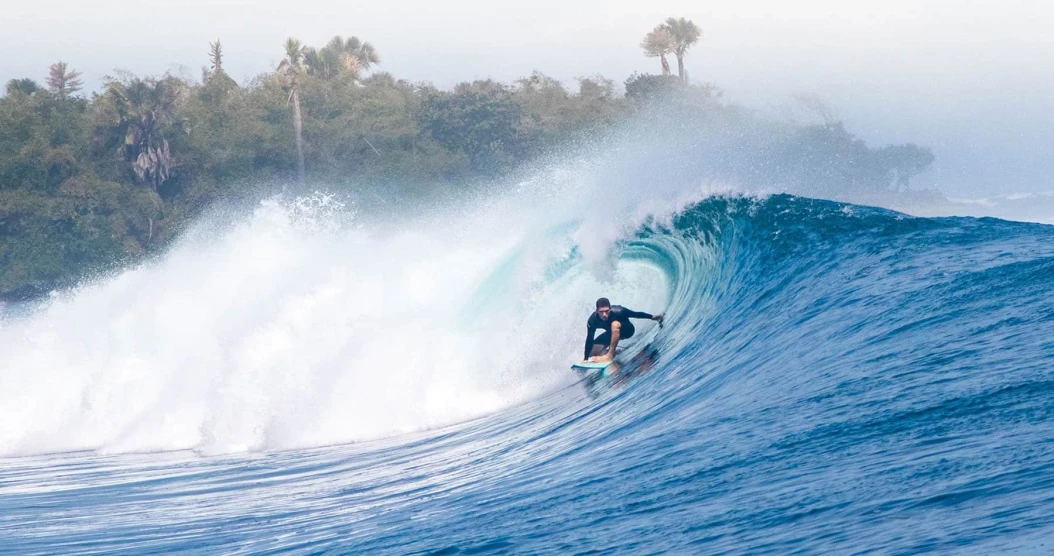
Before buying a surfboard, it's a good idea to start with renting boards to get a sense of what volumes and shapes suit you. First, you need to understand the types of boards that exist, their purposes, and which one you need. Then, you can delve into the intricacies and details. By the way, there's nothing wrong with having multiple boards in your collection. Don't be overwhelmed by the variety of brands and the manufacturer's claims of groundbreaking innovations with their expensive boards. Surfing has a history of over 240 years, and radical changes in surfboard design haven't occurred all that often, so one of the standard boards is likely to suit you.
Of course, many brands now use computer modeling to create boards that are perfectly suited to specific conditions. As a result, there are thousands of boards on the market with different shapes, volumes, and purposes, which doesn't make the choice any easier. Finding the perfect board can be an endless quest and may require a budget equivalent to that of a small African country.
When choosing a board, it's important not to overestimate your abilities. Buying a board that doesn't match your skill level will require much more effort in riding. Progress will be significantly slower compared to using a board that matches your experience. Don't worry; if you dedicate enough time to the sport, you'll see results, and someday you'll be able to skillfully handle the most professional boards. Besides, your first board probably won't stay with you for long. As you gain experience, you'll start to understand what kind of board you need, and your subsequent purchases will be more informed.
In surfing, there are longboards, shortboards, and a wide range of boards in between. "Transitional" boards are designed to capture the characteristics and feelings of longboards or shortboards in the right proportions, using the means available.
Types of surf
Softboard
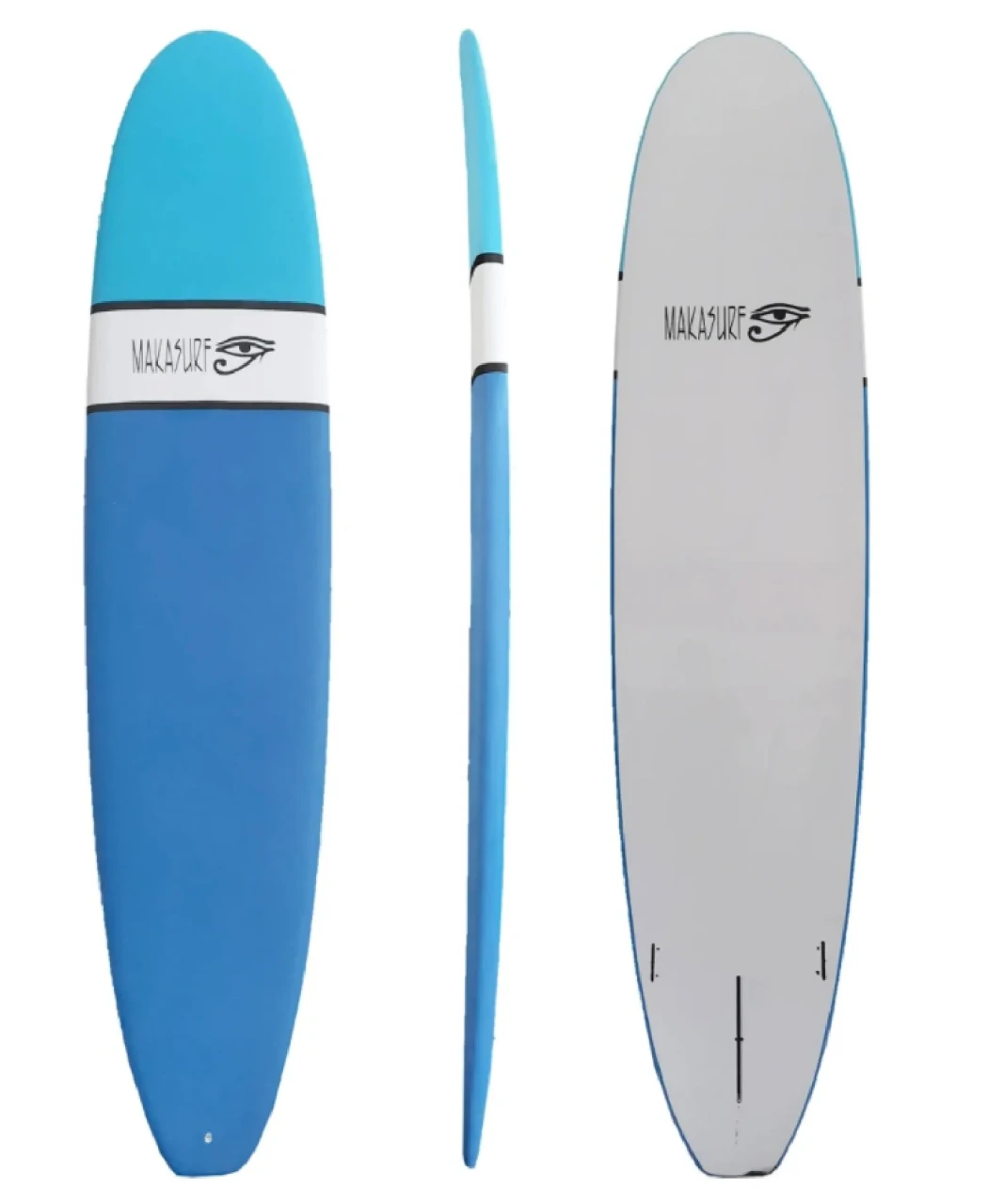
Softboards are a great choice for beginners due to their soft construction, which provides protection against potential injuries during the initial learning stages. Moreover, these boards are very buoyant and significantly more stable than regular surfboards. Thanks to these properties, you'll be able to develop fundamental skills that will allow you to progress further and transition to other types of boards. However, softboards are not ideal for riding large waves and may not be very maneuverable. Of course, all rules are made to be broken. For example, Jamie O'Brien excels at riding a softboard on any type of wave, showcasing the importance of skill. Additionally, softboards are inexpensive and cost-effective to maintain. In general, softboards are the perfect choice for beginner surfers. However, for further advancement, it's advisable to transition to a hardboard as soon as possible if the opportunity arises.
Shortboard
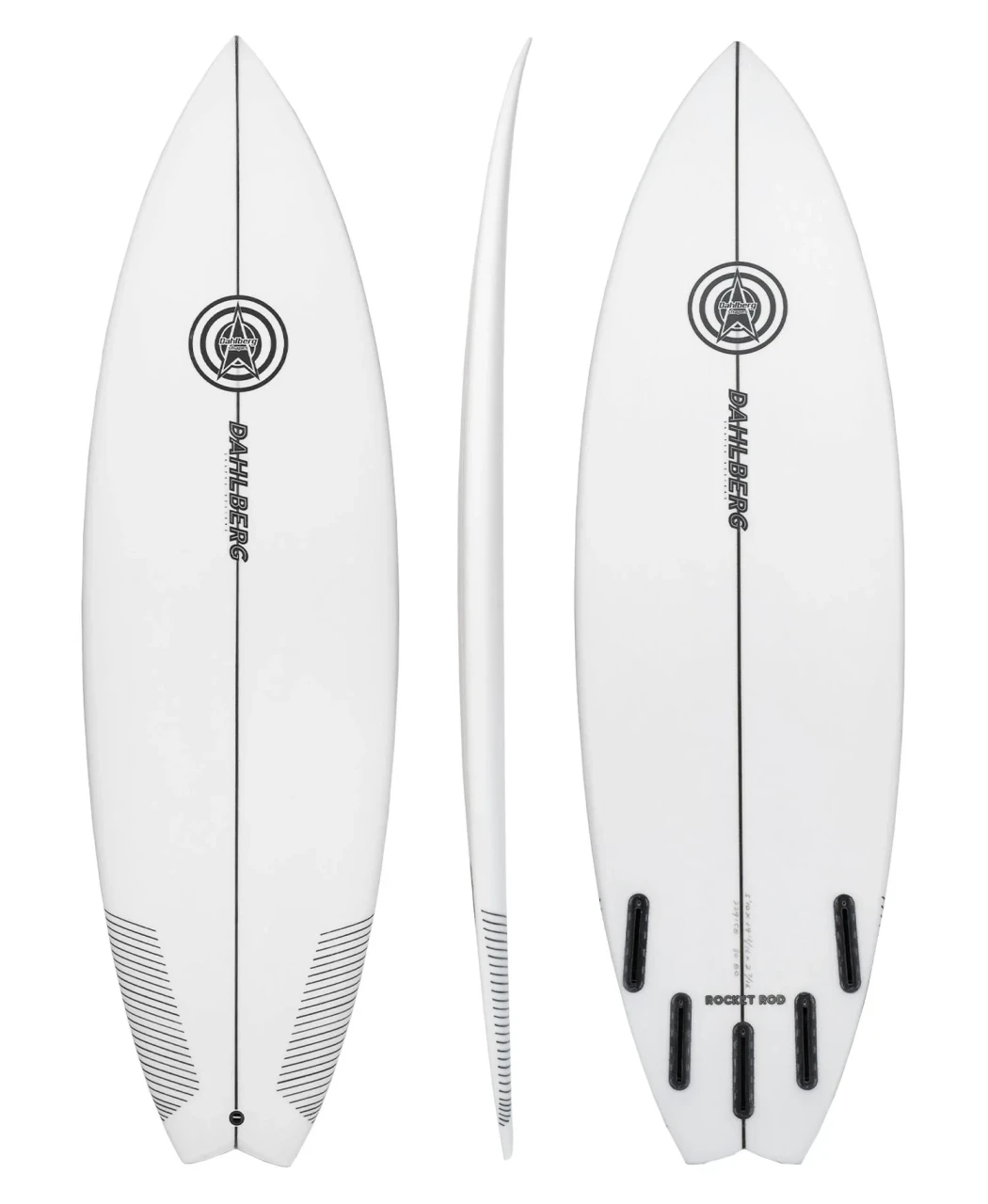
Shortboards are a type of surfboard designed for active and aggressive surfing. They have a streamlined shape and a sharp nose, allowing them to quickly gain speed and catch large waves. Due to their compact size, they provide excellent control and maneuverability, enabling surfers to make sharp turns and perform complex tricks on the wave.
These boards are intended for experienced and advanced surfers who seek intense and dynamic surfing experiences. They offer excellent grip on the water, allowing surfers to control the board even in the most extreme conditions. However, shortboards require a certain level of physical fitness and technical skills to fully harness their potential. They are primarily designed for riding medium to large waves and are not suitable for beginners.
Longboard
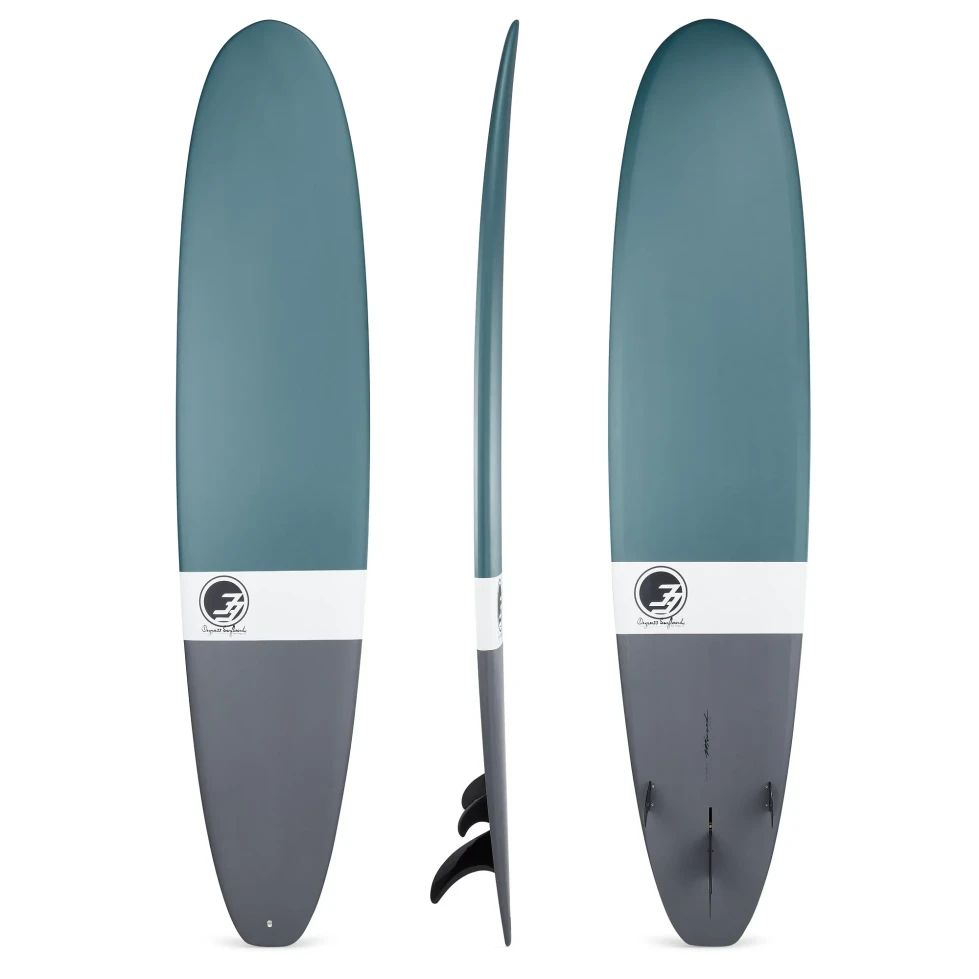
Longboards are elegant and graceful surfboards known for their unique elongated shape. They offer surfers an incredible sense of freedom and smooth gliding on the waves. Longboards are a classic option in the world of surfboards, embodying the aesthetics and spirit of old-school surfing.
The main feature of longboards is their shape, which typically exceeds nine feet (2.7 meters) in length. This allows surfers to gain additional stability and ease of control over the board. The larger surface area also allows surfers to move around on it while riding a wave. Riding a longboard often resembles a mystical dance from an outsider's perspective.
In the end, longboards are an excellent choice for surfers seeking grace, stability, and freedom on the waves. They open the doors to the world of beauty and elegance in surfing, allowing surfers to enjoy slow and smooth glides in harmony with the surrounding nature.
Fanboard
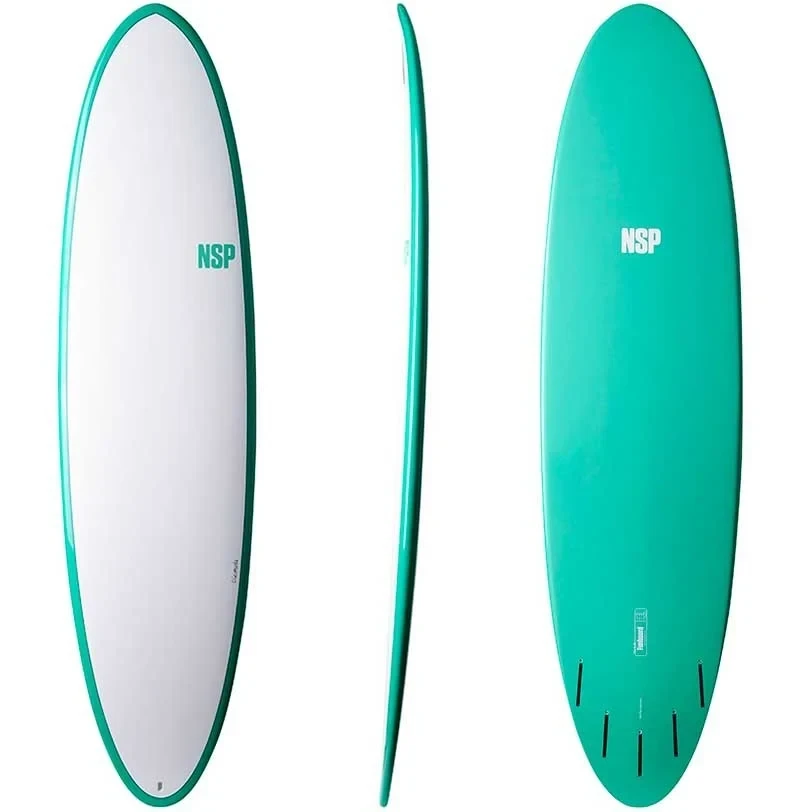
Funboards are a transitional stage between longboards and shortboards. In many of their characteristics, they resemble softboards but are made from "adult" materials like other surfboards. Essentially, they are shortened longboards. This category also includes malibu and mini-malibu boards.
Funboards, like softboards, have high buoyancy and stability, making them ideal for catching small to medium-sized waves. They offer excellent control over the board, allowing the surfer to interact easily with the waves and perform various maneuvers and tricks.
Funboards allow surfers to express their creative individuality and experiment with different styles and approaches. They open the door for surfers to bring their own ideas to life and inspire innovative tricks and graceful movements on the waves. By the way, for beginner shapers, this is also an ideal type of board to start with because there are no strict rules, and you can express your vision. In general, regardless of the surfer's skill level, funboards offer fun and enjoyment in the water.
Fish
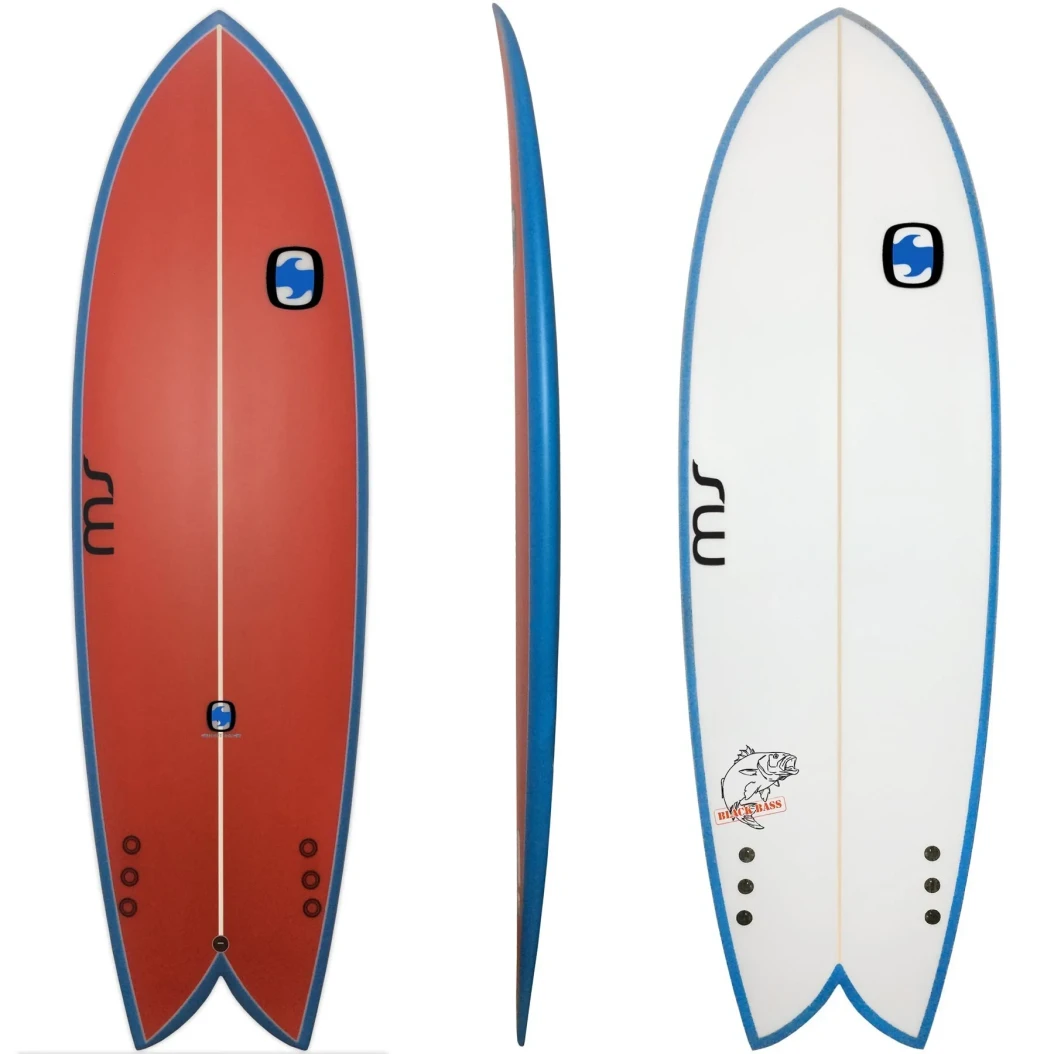
Fish surfboards have a wide and compact shape with a shortened tail, which provides excellent buoyancy and control on the wave. This design allows for easy take-off on the wave and maintaining speed. This makes fish boards ideal for catching small to medium-sized waves. They are probably the fastest boards, easy to paddle and are quite stable.
The main advantage of fish surfboards is their versatility. They perform well in various surfing conditions, whether it's slow waves or fast breaks. Fish boards offer improved maneuverability and the ability to make sharp turns, as well as ease of control at high speeds.
Fish boards represent a unique style in surfing. With twin fins (two fins), they behave differently on the wave compared to a thruster (three fins). Fish boards offer more speed and less control compared to a thruster. The control is enhanced by the shape of the tail, but it slows down the sharpness of turns. Therefore, riding a fish board feels more relaxed and smooth, which adds a lot of fun to the experience. These boards are also a mix of shortboard and longboard. With a larger size than a shortboard, they add smoothness and longboard style.
Additionally, fish surfboards are known for their stylish designs, making them attractive to surfers looking to express their individuality and personal style. With a wide range of color options and shapes, every surfer can find a fish board that reflects their personality and taste.
How to choose
We've covered the types of surfboards. After completing your training on a soft-top surfboard, you'll need to choose at least one more board. Naturally, you can try each type to get a feel for which style suits you best. To ensure your board brings you joy, it's important to select one that matches your height, weight, and the style in which you want to surf.
It's worth noting that choosing a surfboard is often a subjective process, and the best board for you will depend on your individual preferences and surfing style. It's a good idea to consult with experienced surfers, specialists in surf shops, or your instructors before making your first purchase. Sometimes they might even recommend a specific used board they have in mind. Since used boards are often affordable, you can try out many different ones to see which suits you best.
On Bali, there is a wide range of used surfboards available, from almost new to well-worn and patched-up monsters. Naturally, the condition of the board will also affect its price, but it's never a bad idea to inspect a board with an expert, even if it's nearly new and the price is almost like that of a new one.
Moreover, there are plenty of workshops and stores on the island where you can either find a ready-made board or create a custom one from scratch. In any case, you'll need some knowledge about what type of board is suitable for you.
You can start your deliberations with a surfboard volume calculator, as volume plays a significant role in how the board behaves. This calculator takes into account your age, weight, physical condition, surfing experience, and the types of waves you intend to ride. These are precisely the parameters that matter when choosing a board. The calculator will provide you with a recommended volume in liters. In general, the relationship is as follows: more volume makes it easier to paddle and catch waves. However, if you overdo it, the board will lose maneuverability and start "pearling" (nose diving). If the volume is too low, it will be harder to paddle, your speed will be lower, and catching waves will be more difficult. It will also be challenging to maintain speed while riding a wave.
Of course, if you're a beginner surfer, it may be challenging to determine whether to add or reduce volume without enough experience. More practice and advice from experienced surfers will help you with this. You can also try to calculate the required volume manually, for example, using a website like the one you mentioned. But the calculator should suffice to get you started.
Board length
The choice of surfboard length depends on several factors, including your level of experience, the type of waves you'll be riding, your riding style, and your physical characteristics. There are general recommendations that can help you determine the appropriate length for your surfboard.
- Experience: For beginner surfers, it's recommended to choose longer surfboards. Longer surfboards provide better buoyancy and stability, which helps beginners learn the basics and stay on the wave more easily. More experienced surfers can transition to shorter boards that offer greater maneuverability.
- Waves: Consider the type of waves you plan to surf. Longer boards are better suited for slower and less steep waves. For faster and steeper waves, you can opt for a shorter board.
- Style: Different surfing styles may require different board lengths. For a classic, graceful style of riding with long turns on the wave, longer boards like longboards are a better choice. For a more technical, fast, and maneuverable style that includes tricks and sharp turns, you should choose a shorter surfboard.
- Physical Characteristics: Your height, weight, and physical fitness also play a role in choosing the length of your surfboard. A general recommendation is to select a board that is long and wide enough to provide buoyancy and stability in the water. Heavier surfers may require a longer board with greater volume to ensure sufficient buoyancy.
Choosing the right surfboard length is partially a subjective process, and it often requires some trial and error to find the perfect fit. Keep in mind that as you gain more experience in surfing, your preferences may change, and you may want to explore different board lengths to match your evolving skills and style. Consulting with experienced surfers, instructors, or specialists at surf shops can provide valuable insights and recommendations based on your specific needs and goals. Ultimately, your comfort and enjoyment while riding the waves should be the primary consideration when selecting the length of your surfboard.
The number and location of fins on the board
Making the right choice of surfboard fins (or fins) for surfing plays a rather important role in controlling the board on the wave. There are several important parameters to consider.
The size of the fins, which affects the stability and maneuverability of the board. The larger they are, the more stable the board. The smaller they are, the more maneuverable it becomes.
The number of fins on boards also varies. Typically, you can install one to five fins on a board. It's convenient if your board has slots for five fins, as you can use several different configurations depending on the situation. For example, installing only three, two, or even one fin. The number of fins clearly affects the balance between maneuverability and stability of the board.
Conclusion
You'll need to know your weight and height accurately, so don't hesitate to check these measurements before purchasing a board and entering the data into the calculator. Objectively assess your skill level, ask experienced surfers and trainers about the board they think would be suitable for you at the moment. Don't get tied to a specific board brand; perhaps, its competitors may offer a more suitable option. If you know which spot will be your primary surfing location, inquire with local surfers about what to expect and which board is most suitable for the waves at that spot.
You can add one right now!